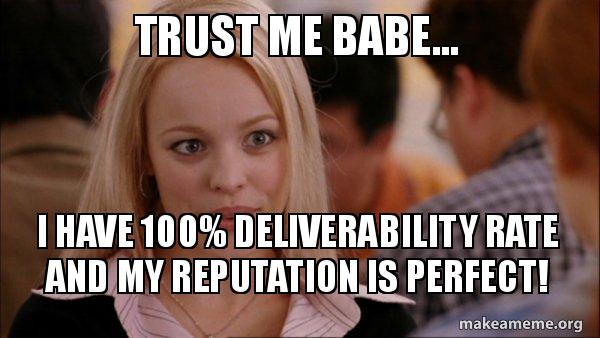
Step by step instructions to Make Sure Your Emails Land Into Your Recipient’s Inbox
The previous month, I got 3 messages from an organization I never knew about. I didn’t put pay consideration to the first and second ones. Be that as it may, was when I got the third one, I began to feel annoyed however the email looked great, it wasn’t salesy, and they really wished me an awesome year for 2018.
I began to explore whether I had bought in to their pamphlet or not and rapidly found that I hadn’t.
So for what reason did they send me those messages?
I made the inquiry. Also, they revealed to me that I associated with somebody from that organization on LinkedIn, so they thought I was keen on what they brought to the table, and added my LinkedIn email to their mailing list.
When you realize that Neil Patel says you can get $39.40 return on each $1 put into email promoting, you see how critical that channel is.
Also, in the event that you send messages to individuals who didn’t approve you to do as such, they get irate. What’s more, on the off chance that they get irate, they stamp your email as SPAM.
That is the worst thing to admit to.
Why?
The appropriate response is deliverability. HubSpot gives the accompanying meaning of email deliverability:
The estimation and comprehension of how likely a sender is at getting their advertising message into individuals’ inboxes.
Clearly, you need your messages to get in your beneficiary’s inboxes. Yet, that is not something you procure until the end of time. You don’t know your email will really arrive in those inboxes when you hit “send”.
Your deliverability relies upon your past actions.
You have an email notoriety. Furthermore, if individuals stamp your messages as spam, obviously that your notoriety endures a shot. What’s more, the more individuals will stamp you as spam, the most noticeably awful your notoriety will turn into, the most exceedingly awful your deliverability will be, and consequently, the less your messages will arrive in your beneficiary’s inboxes (they will arrive in the spam).
It can turn out to be surprisingly more dreadful:
Contingent upon your Internet Service Provider (Comcast, AOL, Verizon… ), you are “approved” to get a specific measure of your messages set apart as spam. Yet, in the event that that number of spams you get surpasses the basic number, your Internet Service Provider (ISP) can specifically close you down.
What’s more, this is the way you lose one of the best promoting channels.
So what would be a good idea for you to do to ensure your deliverability is doing great?
These are for the most part suggestions from Hubspot in their Email Marketing Certification (I prescribe it to any individual who needs to go assist into email advertising):
- Use a great anti-bounce provider: Neverbounce is a great place to start (Or you can ask us really nicely even though we don’t offer it right now!).
- Try not to send messages to individuals who never opened your messages. Your ISPs don’t care for it and will rank you in view of that. So consistently erase those ones who haven’t locked in with your substance amid the previous year. Obviously, you will have a littler rundown, yet it’s route better for you and your ISP.
- On the off chance that you send consistently, your bounce rate ought to be low. 5% or lower! A high or rising bounce rate is clear confirmation that the inbox suppliers don’t care for you or your substance.
- Try not to utilize link-shorteners. They are utilized by spammers to stow away where their URL connections will really wind up.
On the off chance that you take after these accepted procedures, your deliverability ought to be fine!
Thanks a bunch for perusing.
I wish you numerous fruitful email battles!
James

James is Founder of EmailMagpie.com
You can find more information about James on Linkedin
Linkedin: https://www.linkedin.com/in/jamescpalmer
You can reach him on: james@emailmagpie.com






